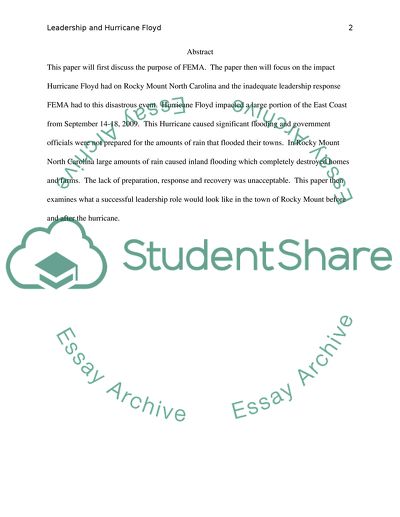Cite this document
(Leadership Response Through FEMA During Hurricane Floyd Research Paper, n.d.)
Leadership Response Through FEMA During Hurricane Floyd Research Paper. Retrieved from https://studentshare.org/environmental-studies/1795893-developing-a-leadership-plan-for-addressing-the-issue-in-hurricane-floyd
Leadership Response Through FEMA During Hurricane Floyd Research Paper. Retrieved from https://studentshare.org/environmental-studies/1795893-developing-a-leadership-plan-for-addressing-the-issue-in-hurricane-floyd
(Leadership Response Through FEMA During Hurricane Floyd Research Paper)
Leadership Response Through FEMA During Hurricane Floyd Research Paper. https://studentshare.org/environmental-studies/1795893-developing-a-leadership-plan-for-addressing-the-issue-in-hurricane-floyd.
Leadership Response Through FEMA During Hurricane Floyd Research Paper. https://studentshare.org/environmental-studies/1795893-developing-a-leadership-plan-for-addressing-the-issue-in-hurricane-floyd.
“Leadership Response Through FEMA During Hurricane Floyd Research Paper”, n.d. https://studentshare.org/environmental-studies/1795893-developing-a-leadership-plan-for-addressing-the-issue-in-hurricane-floyd.


